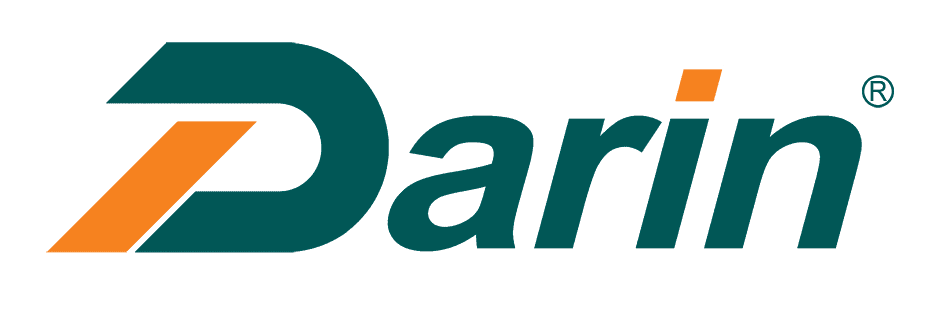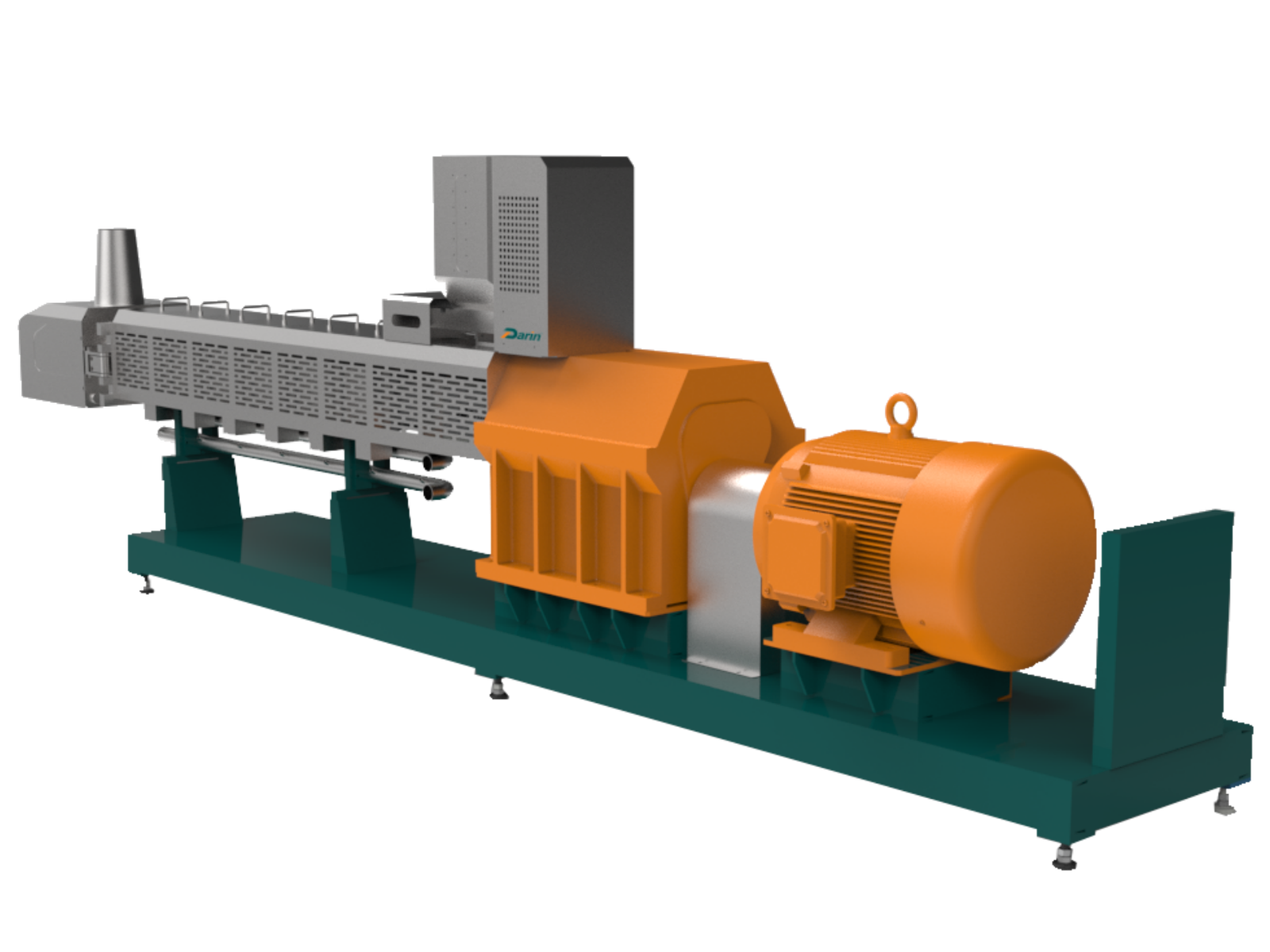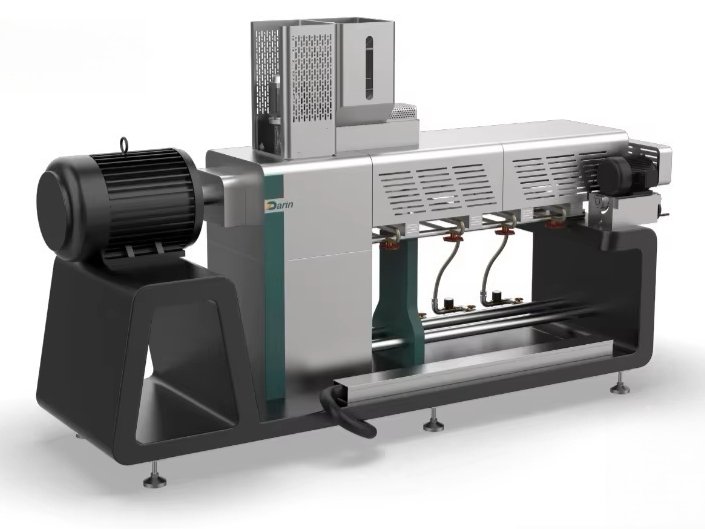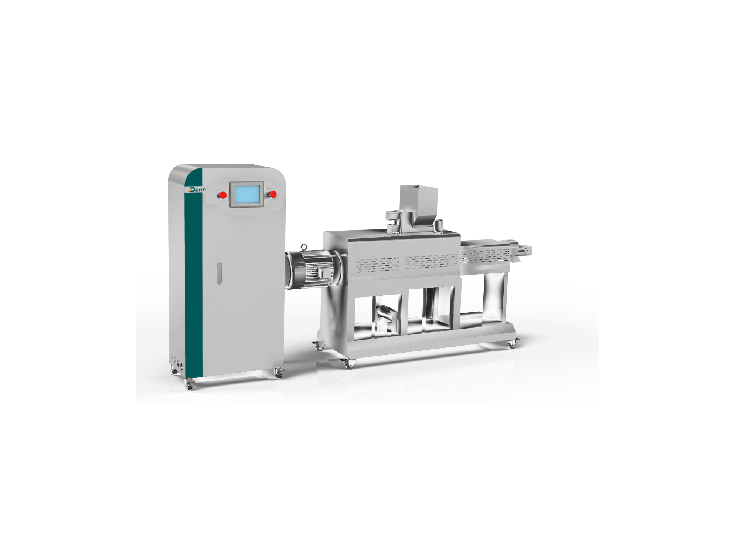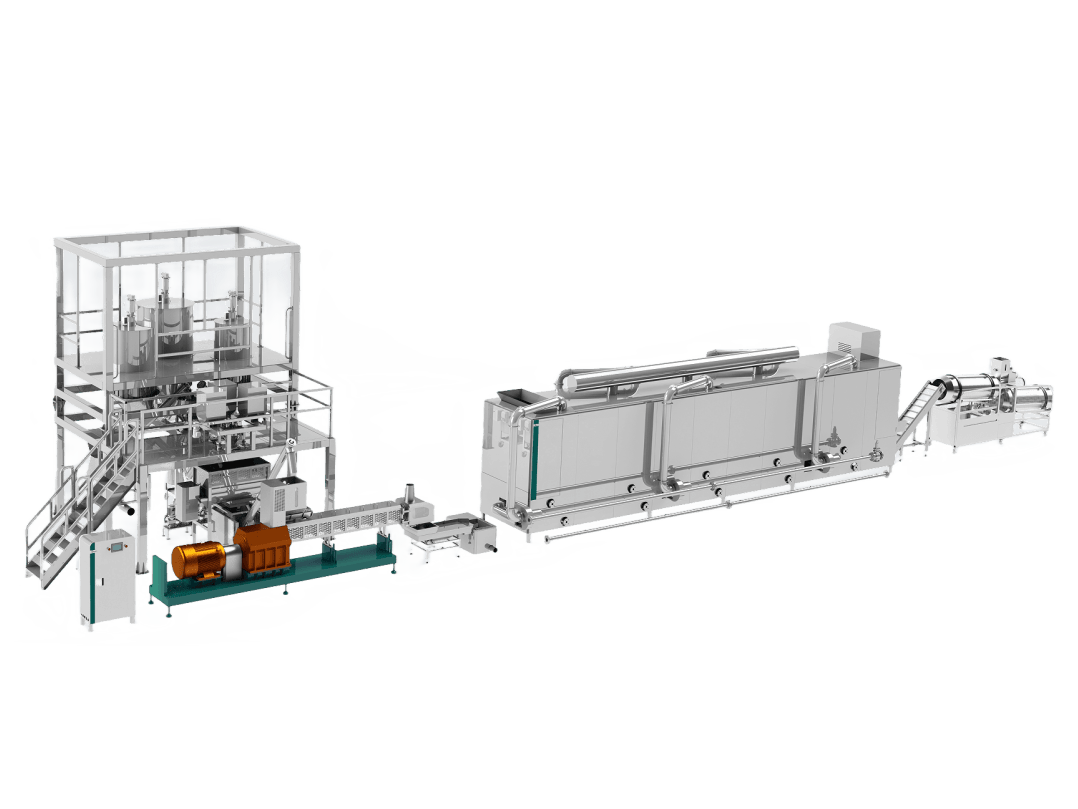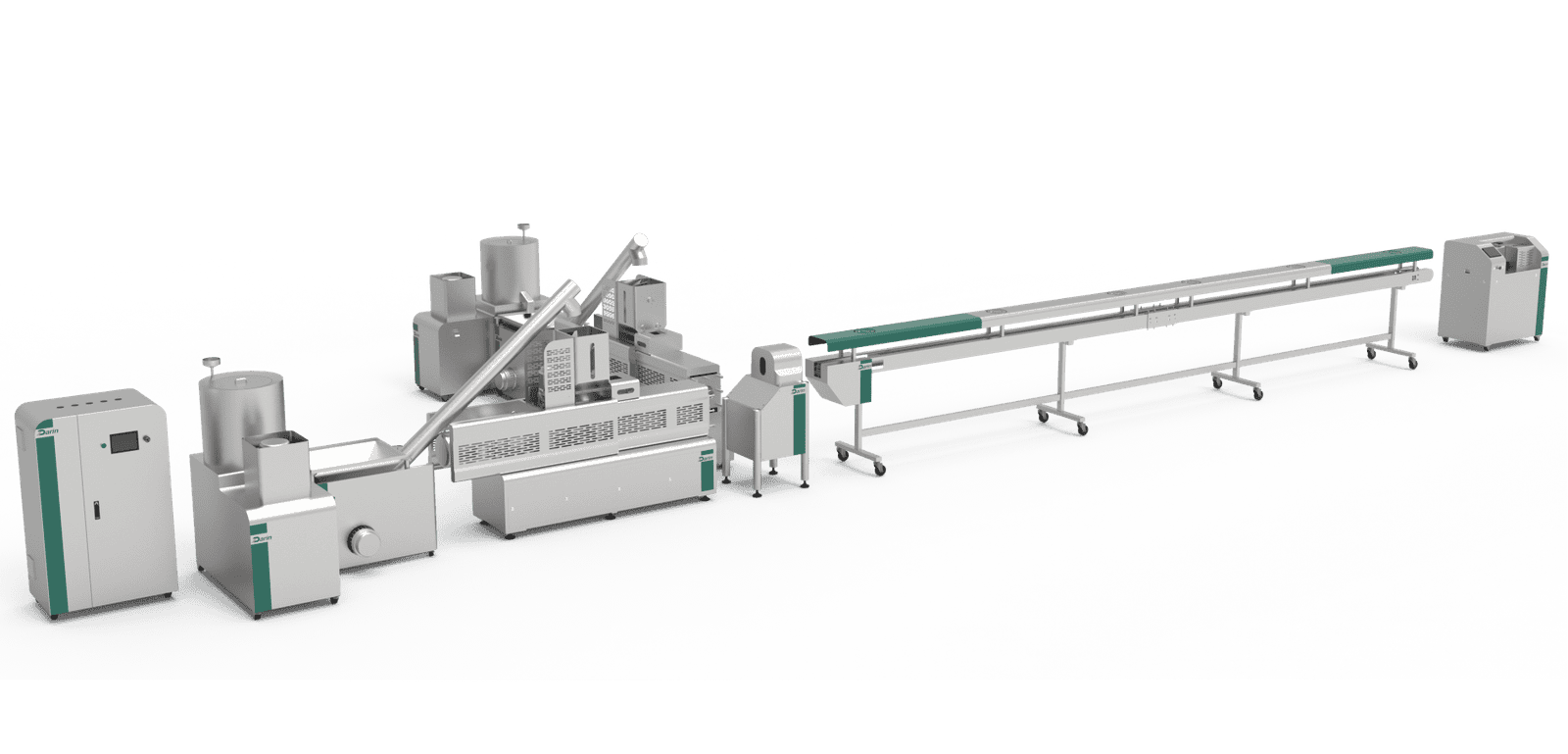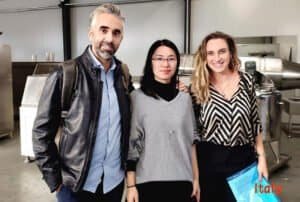 darin® pet food extruder 4 3[/caption]
darin® pet food extruder 4 3[/caption]
In the food manufacturing world—especially pet food and treats production—the extrusion process is the heart of consistent, high-quality output. But many plant managers, entrepreneurs, or new investors are often puzzled by one question: how exactly does screw extrusion work, and what makes it essential? Failing to understand this process can lead to poor equipment choices, low output efficiency, inconsistent product quality, and wasted ingredients. Fortunately, this guide from Darin Machinery will walk you through how screw extrusion works step-by-step—helping you gain confidence in making the right decisions for your production line.
Screw extrusion is a continuous, thermo-mechanical process where raw food materials are forced through a barrel by a rotating screw (or screws), undergoing mixing, cooking, shearing, shaping, and finally exiting through a die to form desired products like pet kibble, meat strips, or treats.
Whether you're producing crunchy pet food pellets, soft snacks, or shaped chews, screw extrusion is the gold standard because it combines speed, flexibility, and high-volume precision. Keep reading to discover how this versatile technology transforms raw ingredients into safe, nutritious, and appealing pet food products.
Screw extrusion is only used for plastic processing.False
Screw extrusion is widely used in the food industry, especially for pet food, snacks, cereals, and even meat analogues.
Understanding Screw Extrusion: Core Mechanism
At its core, screw extrusion transforms a combination of powdered, granulated, or wet ingredients into a consistent final product using thermal and mechanical energy. Here's a technical breakdown of the step-by-step workflow:
🛠️ Key Components of an Extrusion System
| Component | Function |
|---|---|
| Feeder/Proportioning | Delivers a precise ratio of raw materials into the system |
| Pre-Mixer | Homogenizes the dry ingredients before entry into the barrel |
| Screw Conveyor | Transports the mixture from feeder to extruder barrel |
| Barrel & Screws | Main processing chamber; applies shear, heat, and pressure |
| Heating Zones | Electric/steam-controlled zones for accurate temperature control |
| Die & Cutter | Shapes the cooked mass into final form (e.g., rings, sticks, kibble) |
🌀 Inside the Barrel: The Screw’s Role
The screw (or twin screws) is the rotating heart of the extruder. It serves multiple functions as the material passes through different zones:
- Feeding Zone: Material enters and begins to move forward.
- Compression Zone: Shearing, compacting, and partial cooking occur due to heat and pressure.
- Melting/Cooking Zone: Starch gelatinizes, proteins denature—essential transformations for digestibility.
- Metering Zone: Ensures uniform flow and pressure before the die.
- Die Exit & Cutting: Product is shaped and cut into desired lengths, then moves to the drying stage.
🔁 Single-Screw vs Twin-Screw: What’s the Difference?
| Feature | Single-Screw Extruder | Twin-Screw Extruder |
|---|---|---|
| Screw Configuration | One rotating screw | Two co-rotating or counter-rotating screws |
| Material Flexibility | Less flexible | High flexibility for multiple recipes |
| Mixing Performance | Moderate | Excellent (ideal for complex formulas) |
| Maintenance Cost | Lower | Slightly higher |
| Preferred For | Dry pet food, snacks | Meat treats, semi-moist, high-moisture products |
Twin-screw extruders allow for better mixing and flexibility compared to single-screw models.True
The intermeshing screws provide enhanced mixing and control, ideal for handling complex or sensitive formulations.
🧪 Thermo-Mechanical Effects: What Happens to Ingredients?
During screw extrusion, the combination of mechanical shear and controlled heat causes:
- Starch Gelatinization: Enhances digestibility and texture
- Protein Denaturation: Improves functional properties and shelf-life
- Moisture Flash-Off: Reduces water activity, improving product stability
- Structure Expansion: Forms the familiar “puffed” look in kibble or snacks
Proper control of these variables is crucial. At Darin, all extruders (such as the Pet Feed Extruding Line or Soft Treats Line) come with programmable PLC systems to monitor torque, temperature, and screw speed in real time for consistent quality.
🔢 Output Capacity & Efficiency
Extruders vary in size and throughput. Below is a typical performance chart:
| Model Name | Output Capacity | Power Consumption | Application Type |
|---|---|---|---|
| Darin Mini Lab Extruder | ~5 kg/hr | 4–5 kWh | Pilot testing, R&D |
| Darin Mid-size Twin-Screw | 100–300 kg/hr | 25–60 kWh | Pet treats, semi-moist products |
| Darin Large Feed Line | 1–10 tons/hr | 120–250 kWh | Bulk dry feed production |
Extrusion machines are energy-inefficient and not suitable for large-scale food production.False
Modern extruders are highly energy-optimized and ideal for scalable, hygienic, and continuous food production.
🧰 Real-World Application: Darin Machinery Extrusion Lines
Darin offers various extrusion systems tailored for pet food and treat producers:
✔ Darin Pet Food Extruding Line
- Ideal for: Kibble, multi-shape pet food
- Features: Auto batching, crushing, extrusion, drying, coating
- Output: 1–10 t/h
- Screw Type: Twin-screw with high-torque motor
✔ Darin Soft Treats Production Line
- Ideal for: Semi-moist treats
- Includes: Extruder, dryer, proportioning and flavoring systems
- Integration: Compatible with traying and cutting modules
✔ Darin Cold Extrusion Line
- Ideal for: Rawhide, chewy snacks
- Uses: Double-head extruder for high output
- Advantages: Precise shape control, low-temp preservation
Each system integrates stainless steel food-contact components, CE-certified safety systems, and custom engineering based on customer needs.
📊 Extrusion Performance Monitoring Parameters
| Parameter | Purpose | Target Range |
|---|---|---|
| Barrel Temperature | Controls cooking and expansion | 80–180°C |
| Screw Speed (RPM) | Influences residence time and shearing | 200–600 RPM |
| Moisture Content | Affects texture and processing | 16–28% (input), 8–12% (output) |
| Torque & Pressure | Indicator of mechanical load | 40–90% of rated max torque |
These are adjustable depending on the raw formula, final product type, and extruder design.
Final Thoughts: Why Mastering Screw Extrusion Matters
Understanding how screw extrusion works isn’t just for engineers. Whether you're an investor, factory owner, or product developer, this knowledge enables better purchasing, optimization, and troubleshooting decisions. From protein-packed meat sticks to high-fiber dental chews, the extrusion process allows you to bring high-performance pet food to market with consistency, safety, and scale.
💬 Contact Us Today to Build Your Ideal Extrusion Line
Darin Machinery has helped 70+ countries implement efficient, reliable, and innovative pet food extrusion systems. Whether you’re launching a new brand or upgrading your facility, contact our team for customized solutions and expert guidance tailored to your production goals.
Let’s engineer your next success—starting with screw extrusion.
 Darin factory[/caption]
Darin factory[/caption]
FAQ
Q1: What is screw extrusion and how does it function?
A1: Screw extrusion is a continuous manufacturing process where raw materials such as plastic pellets, powders, or food ingredients are fed into an extruder. Inside the extruder barrel, a rotating screw (or screws) conveys the material forward while applying heat and pressure. This causes the material to melt, mix, and homogenize. The molten or semi-solid mass is then forced through a die at the end of the barrel to shape it into the desired form (like pipes, films, or snacks). The process is widely used due to its efficiency, consistent output, and adaptability to various materials.
Q2: What is the difference between single-screw and twin-screw extrusion?
A2: A single-screw extruder uses one rotating screw to move and process material, ideal for simple compounding or melting tasks. In contrast, a twin-screw extruder uses two intermeshing screws (either co-rotating or counter-rotating), which provide better mixing, flexibility, and higher throughput. Twin-screw systems are preferred for complex processes, such as producing filled polymers, reactive extrusion, or multi-component food products.
Q3: Which materials can be processed with screw extrusion?
A3: Screw extrusion can handle a wide range of materials, including thermoplastics like polyethylene (PE), polypropylene (PP), PVC, and polystyrene (PS). It’s also widely used in the food industry for making products like pasta, snacks, pet food, and textured vegetable proteins. Additionally, it's employed in pharmaceutical and chemical applications where precise mixing and shaping are required.
Q4: Why is screw extrusion preferred over other forming methods?
A4: Screw extrusion offers numerous advantages: continuous operation, scalability, precise control over temperature and pressure, uniform product quality, and flexibility in design via interchangeable dies. Compared to batch processes like injection molding or compression molding, extrusion is more efficient for high-volume production and allows customization of output shapes and properties with relative ease.
Q5: What are the main components of a screw extruder?
A5: A typical screw extruder includes:
- Hopper: Feeds raw material into the system
- Barrel: A heated cylindrical chamber housing the screw(s)
- Screw(s): The rotating element that conveys and mixes the material
- Heaters: Maintain optimal temperatures along the barrel
- Die: Shapes the extruded material
- Cooling system: Solidifies the product after it exits the die
- Motor and gearbox: Provide the torque to rotate the screw(s)
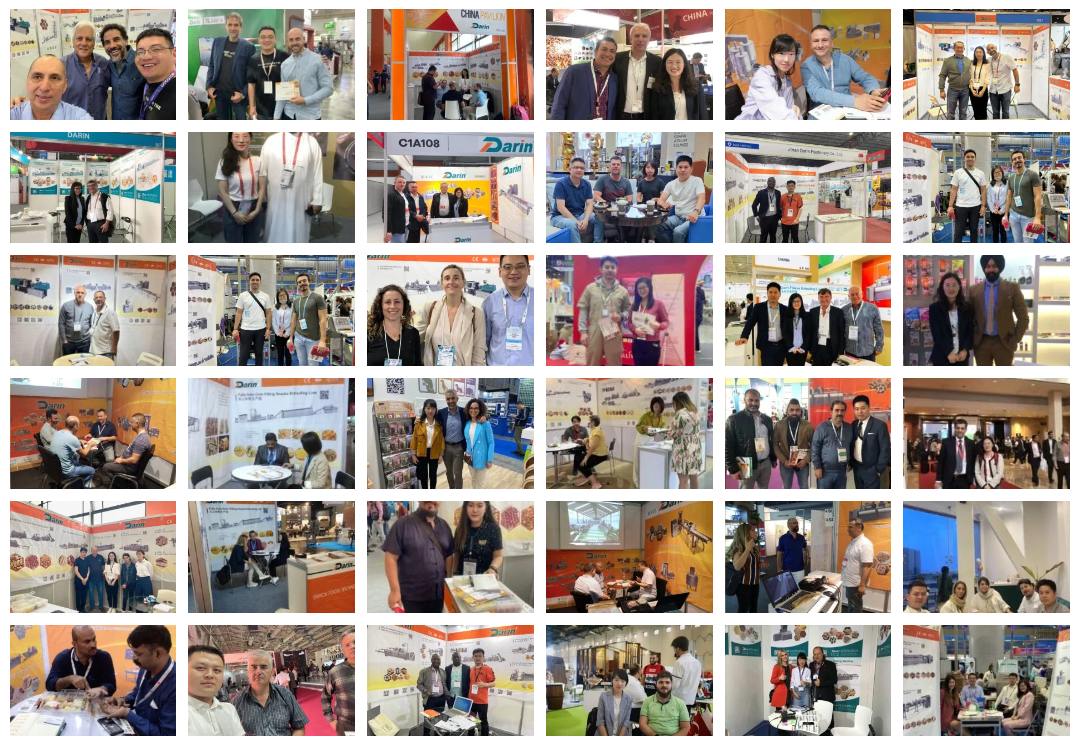 Darin exhibition[/caption]
Darin exhibition[/caption]
References
- Plastic Extrusion Process | https://www.ptonline.com/articles/the-plastic-extrusion-process | Plastics Technology
- Food Extrusion | https://www.sciencedirect.com/topics/food-science/food-extrusion | ScienceDirect
- Twin-Screw Extrusion Overview | https://www.coperion.com/en/products-and-services/extruders/twin-screw-extruders/ | Coperion
- Single-Screw Extrusion Basics | https://www.azom.com/article.aspx?ArticleID=9277 | AZoM
- Polymer Processing Fundamentals | https://www.sciencedirect.com/book/9780124167517/polymer-processing | Elsevier
- Thermoplastics Extrusion Guide | https://omnexus.specialchem.com/polymer-processing/extrusion | SpecialChem
- Food Extrusion Technology | https://www.springer.com/gp/book/9781461453459 | Springer
- Plastic Extrusion Components | https://www.rdnmfg.com/plastic-extrusion-components/ | RDN Manufacturing
- Screw Design and Optimization | https://www.xaloy.com/products/barrels-and-screws.html | Xaloy
- Introduction to Extrusion | https://www.davis-standard.com/resource-center/introduction-to-extrusion/ | Davis-Standard
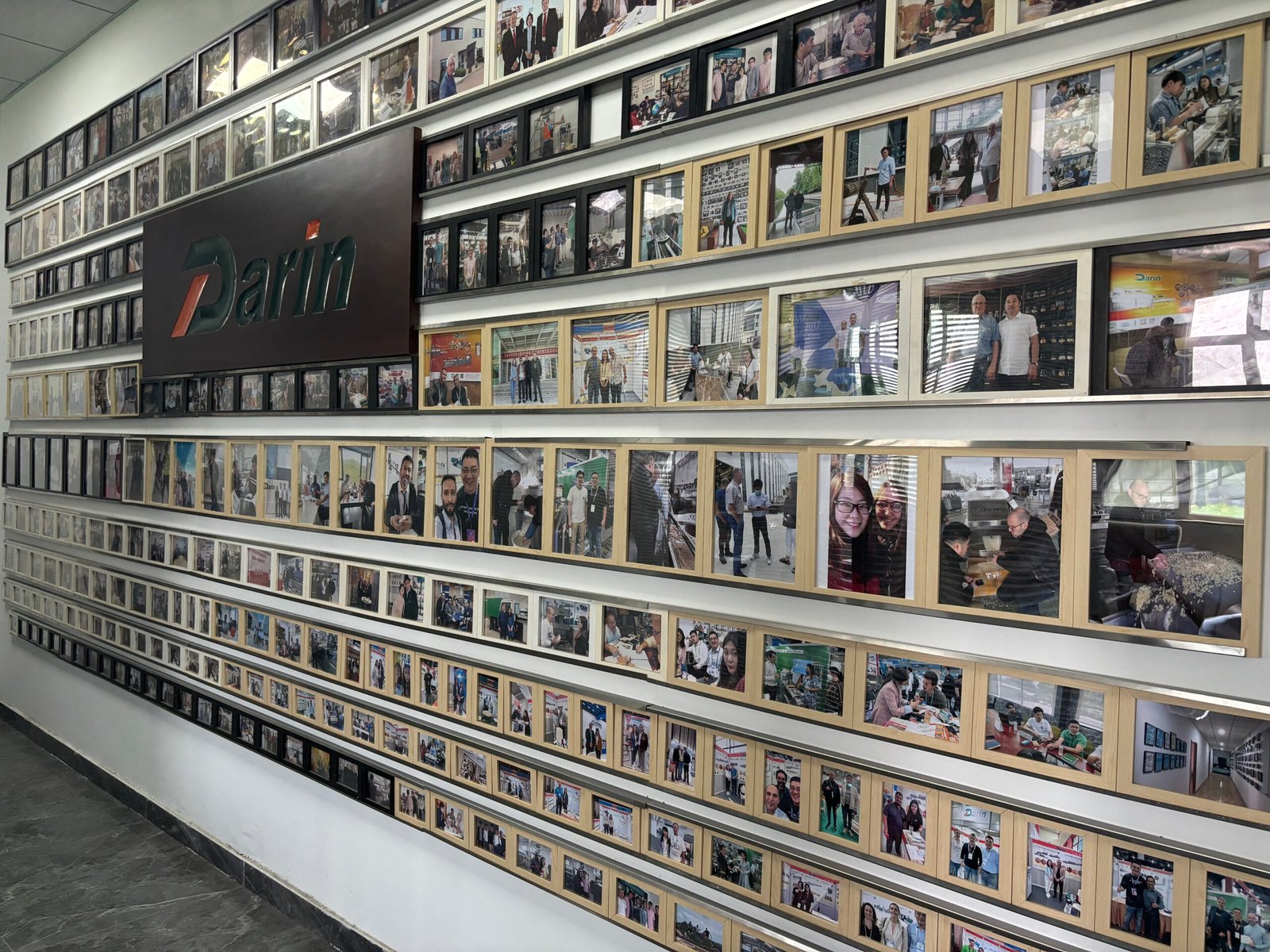 Darin
Darin
